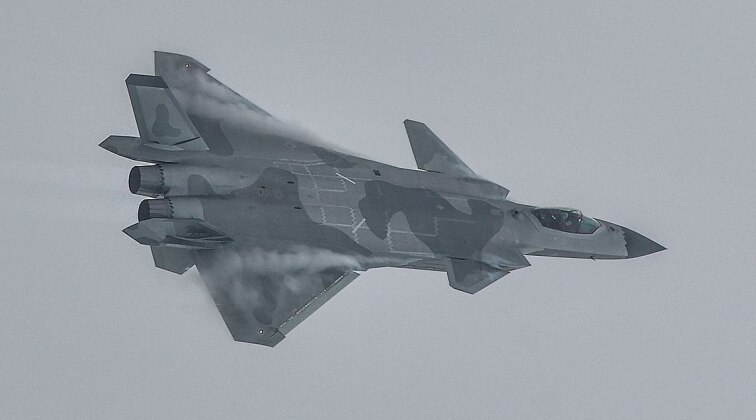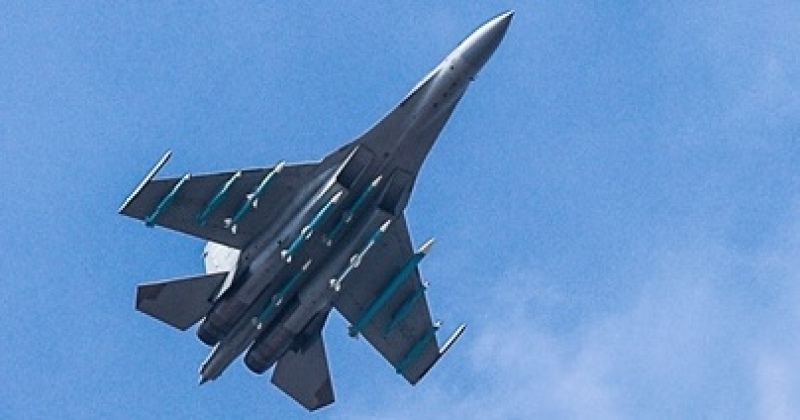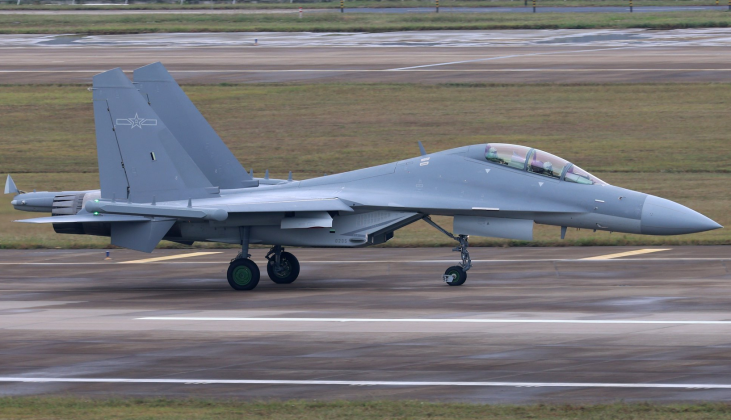In the mid-2010s the Chinese People’s Liberation Army (PLA) Air Force brought three new classes of fighter into service, with these having today been deployed across more than 40 regiments to revolutionise the country’s aerial warfare capabilities. By far the most prominent has been the Chengdu J-20 as the world’s sole class of fifth generation fighter developed and widely fielded outside the United States, which was conceived as a heavyweight long range air superiority fighter with cutting edge avionics and stealth capabilities. Complementing the high performance stealth fighter were the J-16, a heavily enhanced derivative of the country’s first fourth generation air superiority fighter the Su-27 Flanker, which comes from a similar weight range to the J-20 and similarly carries a very large radar and has a high endurance. The two were supported by the J-10C, a lightweight single engine fourth generation fighter which until 2022 was produced on a much larger scale than either of them allowing squadrons to modernise with fifth generation level avionics and weaponry at a modest cost. While the J-10C has proven highly potent in both strike roles and in air to air combat during exercises, outperforming Russian Su-35s close to double its size and proving a close match for the J-16, its much shorter range, lower weapons payload and particularly its smaller radar limit the ways in which it can be operated compared to its two heavier counterparts.

The J-20 as a fifth generation fighter has the inherent advantage of a cutting edge radar cross section reducing airframe which makes it highly survivable in beyond visual range engagements, with this paired with a much reduced heat signature to reduce vulnerability within closer ranges. Although the aircraft first entered service in 2017 with a comparable range to the J-16, the integration of superior WS-10C engines on models entering service from 2021 onwards significantly improved its endurance and introduced the ability to fly supersonically without using its afterburners. The discrepancy in range and flight performance is set to increase considerably with the integration of WS-15 next generation engines, which will allow non-afterburner supersonic cruise at far higher speeds while also facilitating far higher manoeuvrability levels including. The J-20 also introduces a number of avionics features not known to be integrated on the J-16, including a distributed aperture system which is particularly valuable for visual range engagements. These advantages have led the PLA Air Force to handicap J-20s when placing them in simulated engagements with J-16s by nullifying their stealth capabilities with special reflectors.

While the J-20 has a number of distinct advantages, the J-16 is not hampered by the need to carry weapons internally to maintain a reduced radar cross section. This not only allows it to deploy significant larger payloads, but also to carry higher diameter missiles and bombs that could not be accommodated in the J-20’s weapons bays. Most notable among these is the PL-XX long range air to air missile, which outranges all known missiles of its kind in the world at 500 to 600 kilometres. The missile uses dual infrared and radar guidance, and is optimised to neutralising high value aircraft such as strategic bombers and support platforms such as AEW&Cs. A further specialist role which the J-16 is able to fulfil, and which the J-20 cannot, is that of a dedicated electronic attack and air defence suppression platform, with the J-16D variant unveiled in 2021 being a close contender for the title of the world’s leading aircraft for this role and expected to have no fully peer challengers for the foreseeable future.

While a key disadvantage of American fifth generation fighters is their higher operational costs and maintenance requirements relative to their fourth generation counterparts, and resulting lower availability rates, the J-20 is not thought to be significantly harder or more costly to operate than equivalent fourth generation aircraft. Nevertheless, while the J-16 may be considered less cost effective than the J-20, its PL-XX missile makes it a highly effective complement to the stealth fighter for its ability to threaten high value targets. While the J-20 has only entered service in single seat configuration, the J-16’s twin seat configuration is also optimal for operating as an airborne command centre or launching more complicated missile strikes, with the second seat accommodating a weapons systems officer accordingly.
Although the surge in production of J-20s from 2022, which is expected to bring production to close to 120 in 2025, could lead to a reduction in J-16 acquisitions, the J-16 is expected to maintain a valuable place in the fleet. With the J-20 as an entirely clean sheet design having taken more time after service entry to become fully operational, and entered service close to three years after the J-16, the advanced fourth generation aircraft for years served as China’s top fighter for air to air combat while the newer stealth jet got through initial ‘teething issues.’ Thus while the J-16 played a much more important operational role in the fleet during 2010s up to around 2023, further refinement of the J-20 and accelerated acquisitions will gradually lead it to supersede its non-stealth counterpart in importance.
